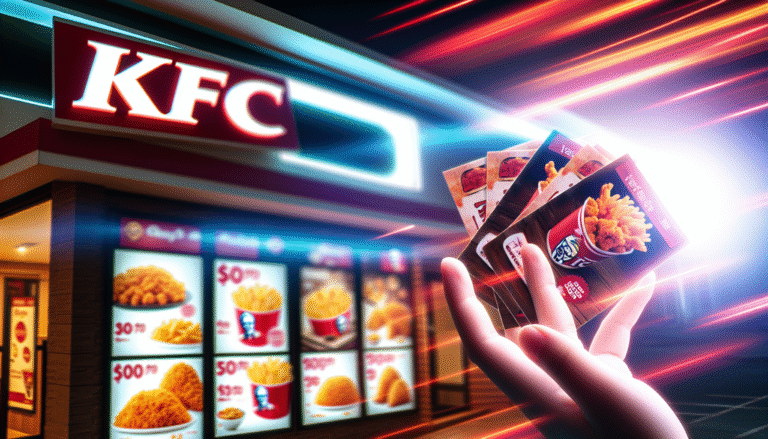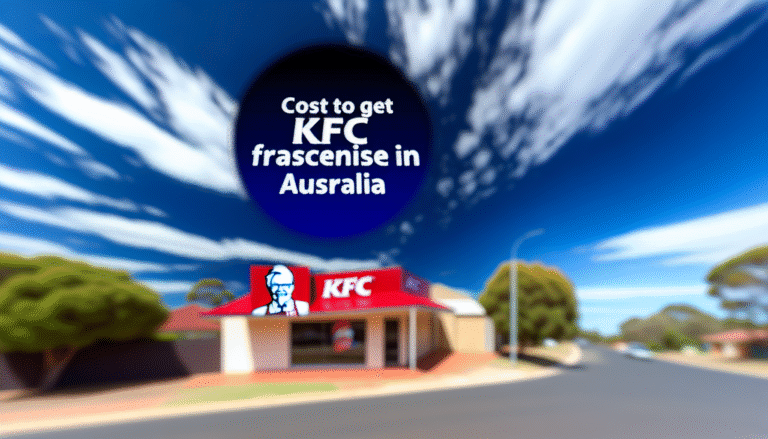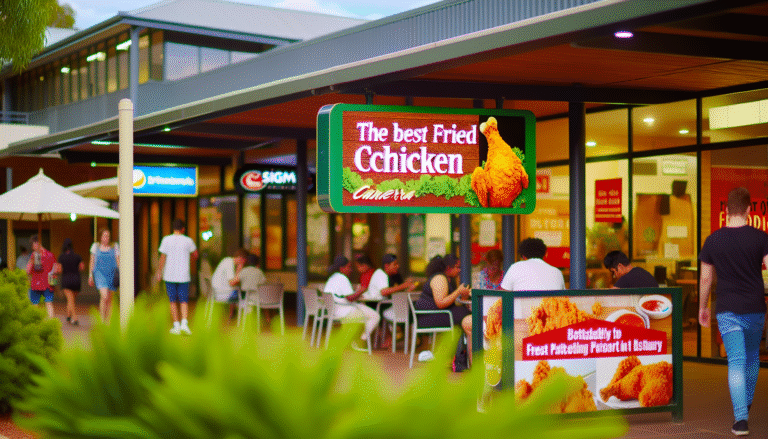How Much KFC Lost After Boycott?
KFC, one of the most popular fast-food chains in the world, has faced its fair share of controversies throughout the years. One of the most significant challenges the brand has had to navigate in recent times is the impact of boycotts. Boycotts have always been a powerful tool for consumers to express dissatisfaction with a company’s actions, values, or business practices, and KFC has not been immune to such movements.
Boycotts can have a significant effect on a company’s finances, reputation, and consumer loyalty. In this article, we will explore how much KFC has lost after recent boycotts, the reasons behind the boycotts, the economic impact on the brand, and the strategies KFC has implemented to bounce back.
1. Reasons for the KFC Boycott
The reasons behind the boycotts of KFC vary, but many of these movements have been sparked by either public relations blunders or social issues that caused backlash from certain groups. Some of the key reasons for KFC boycotts include:
- Animal Welfare Concerns: One of the most frequent reasons for boycotting KFC is the ethical concern over how the company sources its chicken. Activists have raised concerns about the treatment of animals within KFC’s supply chain, particularly in relation to the conditions in which the animals are raised and slaughtered.
- Health Concerns: Some consumers have raised objections to the healthiness of KFC’s menu, with high-fat content and processed food being cited as health risks. This has led to calls for boycotts from groups focused on healthier living.
- Cultural or Political Stances: On a number of occasions, KFC has been linked to political stances that did not resonate with all consumers. Whether it was a marketing campaign, an endorsement of certain political figures, or their business ties with certain countries, KFC faced backlash for perceived insensitivity to the views of certain cultural or social groups.
- Environmental Issues: The environmental impact of fast-food chains like KFC has also been a factor in some boycotts. These concerns are mainly related to packaging waste and the carbon footprint of the supply chain.
While each of these factors alone might seem small, when combined with the power of social media and collective action, they can lead to significant economic damage.
2. The Economic Impact of KFC Boycotts
Boycotts, while difficult to measure with precision, can have a considerable financial impact on a company like KFC. Here’s a breakdown of how KFC has likely been affected financially by these consumer movements.
2.1 Revenue Losses
The most direct consequence of a boycott is the loss of sales. A reduction in foot traffic to KFC locations and a decline in online orders can have immediate effects on revenue. For a global brand with millions of customers, even a slight dip in consumer behavior can result in large revenue losses.
Estimates suggest that boycotts can cause a decline in sales of anywhere between 5% to 10% over the course of several months. This impact is usually felt most acutely in the areas where the boycott is most intense, but the overall global revenue can still experience a dip. For a company the size of KFC, this can mean losses in the millions of dollars.
2.2 Brand Image Damage
While revenue loss is one aspect, the damage to the brand’s reputation is another. KFC’s branding is closely tied to its image of offering high-quality, delicious chicken, and any threat to this image can cause long-term harm. If customers feel that the company is acting against their values—whether through animal welfare violations, unhealthy practices, or environmental concerns—they may choose to avoid the brand altogether, even after the boycott ends.
Restoring a brand’s reputation after a public boycott can take years. Often, the damage to consumer loyalty can linger long after the boycott itself has ended. Negative press, social media campaigns, and media coverage can haunt a company for months, making it harder to regain customers.
2.3 Stock Prices and Investor Confidence
A boycott can also have an indirect effect on KFC’s parent company’s stock prices. If there is a significant drop in consumer demand or negative publicity surrounding KFC, this may cause fluctuations in stock prices. Investors may worry about long-term prospects and future sales, leading to a decline in stock prices. This may be particularly damaging if the boycott occurs at a time when KFC is already dealing with other business challenges, such as economic downturns or increased competition.
3. How Much Did KFC Lose in the Latest Boycott?
While exact figures can be difficult to pinpoint, estimates suggest that KFC’s revenue loss from boycotts can be substantial. For example, the animal rights-related boycotts led by various groups, including People for the Ethical Treatment of Animals (PETA), have sometimes caused a drop in sales. Though KFC’s parent company, Yum! Brands, doesn’t release detailed figures on the impact of boycotts, it is generally estimated that a boycott can result in anywhere from a few million dollars to tens of millions of dollars in losses over a period of months.
During major boycotts, KFC typically witnesses a noticeable reduction in foot traffic to its stores and a dip in online orders, especially in areas where the boycott is most active. While these losses are significant, KFC’s brand is strong enough to weather most of these challenges, especially if the company responds proactively.
4. KFC’s Strategies to Combat Boycotts and Rebuild Its Image
In the wake of boycotts, KFC has worked hard to restore its image and mitigate the financial impact. Here are some strategies KFC has implemented:
4.1 Improving Transparency
KFC has made strides toward improving transparency, especially regarding its sourcing practices. In response to criticisms of animal welfare, KFC has worked with suppliers to improve the conditions under which chickens are raised and slaughtered. They have also introduced more environmentally friendly practices, including reducing packaging waste and using more sustainable materials in their operations.
4.2 Menu Modifications
To address health-related concerns, KFC has introduced healthier menu options in recent years, including grilled chicken, salads, and lower-calorie alternatives. These changes were made to cater to a health-conscious audience and to respond to growing concerns about obesity and diet-related diseases.
4.3 Public Relations and Community Engagement
KFC has also used public relations strategies to rebuild its image. The company often engages with social media campaigns and other outreach programs to emphasize its commitment to quality and customer satisfaction. This type of engagement helps to rebuild trust with consumers who may have been disillusioned by past controversies.
4.4 Corporate Social Responsibility Initiatives
KFC has invested in corporate social responsibility (CSR) initiatives aimed at addressing environmental concerns and giving back to the communities it serves. This includes charity partnerships, waste-reduction programs, and sustainability efforts in its supply chain. These initiatives can help to shift public perception and demonstrate the brand’s commitment to social and environmental responsibility.
5. Summary Table
| Factor | Impact on KFC | Financial Losses | KFC’s Response |
|---|---|---|---|
| Animal Welfare Concerns | Boycotts over chicken sourcing conditions | Losses in sales and reputation | Improved sourcing, transparency |
| Health Concerns | Reduced demand for high-fat menu items | Possible drop in revenue | Introduction of healthier menu items |
| Cultural/Political Stances | Negative press and consumer backlash | Short-term revenue decline | Increased engagement with diverse audiences |
| Environmental Issues | Boycotts due to packaging and sustainability concerns | Potential loss of customers | CSR initiatives and sustainable practices |
6. FAQs
1. How much did KFC lose during the latest boycott?
While exact figures are hard to determine, boycotts typically result in millions of dollars in revenue loss, especially during high-profile campaigns related to animal welfare or health concerns.
2. How does KFC handle boycotts?
KFC responds by improving transparency in its sourcing practices, introducing healthier menu options, and engaging in public relations efforts to rebuild its image.
3. What impact do boycotts have on KFC’s stock price?
Boycotts can lead to a temporary dip in KFC’s stock price, as investors may worry about long-term sales declines due to the backlash.
4. Has KFC ever fully recovered from a boycott?
Yes, KFC has recovered from past boycotts by implementing changes in its practices, engaging with consumers, and improving its public image. However, recovery can take time and effort.
Related: Kfc Children Menu



